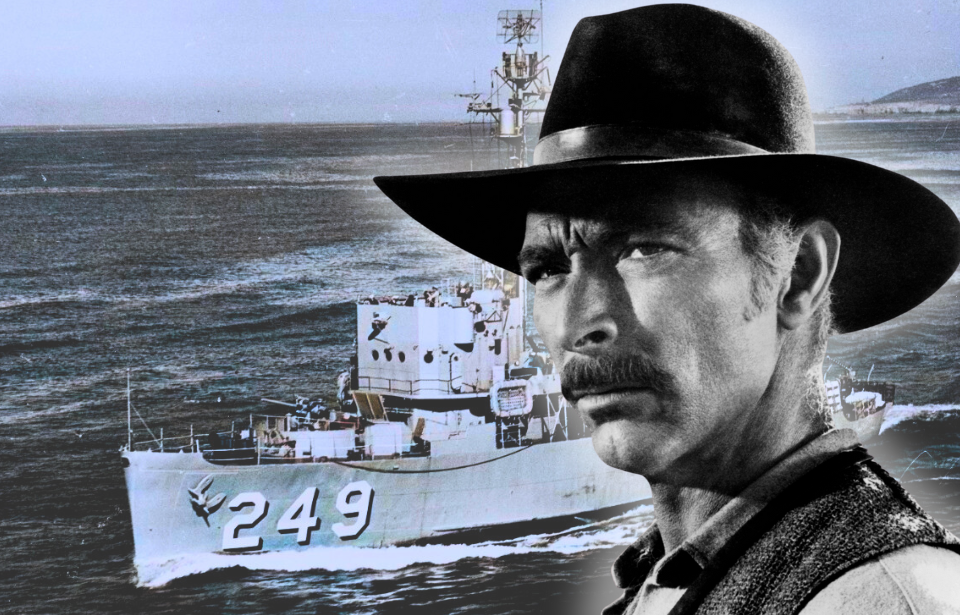Lee Van Cleef was a key figure in the golden age of Western films in American cinema. Known for his sharp features and stoic presence, he played the perfect on-screen villain. Yet, in reality, Van Cleef was a hero who had served his country during World War II.
Lee Van Cleef enlisted in the US Navy
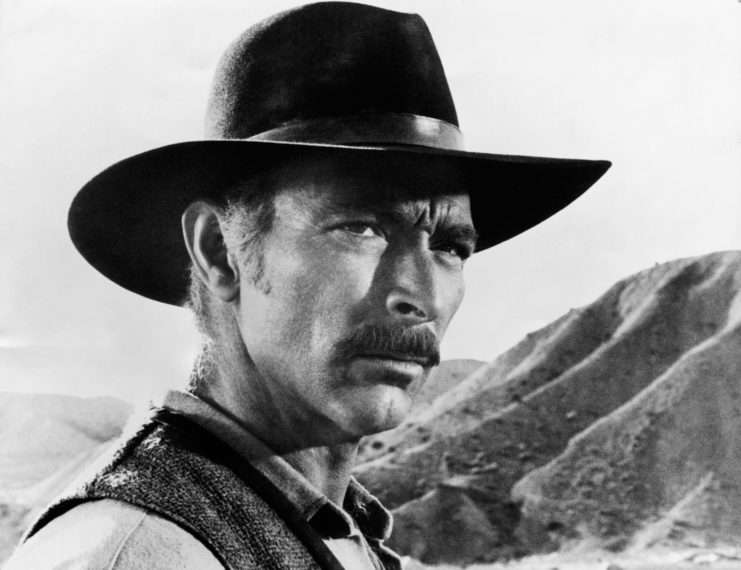
Clarence LeRoy “Lee” Van Cleef, Jr. was born on January 9, 1925. Raised in the town of Somerville, New Jersey, he graduated from high school early, with the intention of enlisting in the US Navy. By that time, the United States had entered the Second World War, and the future Western star was looking to do his part.
Van Cleef underwent basic training in late 1942 and subsequently attended Sonarman School. He was given the rank of sonarman third class upon completing this portion of his training and assigned to the submarine chaser USS SC-681. Over the course of this 10-month assignment, the vessel was sent to the Caribbean, to search for German U-boats in the region.
By the time Van Cleef was told to leave the ship and attend the Fleet Sound School in Key West, Florida, he’d been promoted to sonarman second class.
Participating in the Allied landings of France
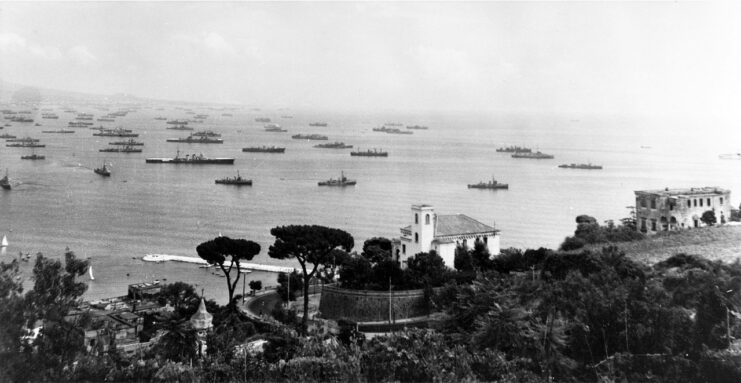
After graduating from Fleet Sound School, Lee Van Cleef was assigned to Savannah, Georgia, as part of the pre-commissioning crew for the minesweeper USS Incredible (AM-249). After the ship’s shakedown cruise along the East Coast and the Caribbean, Van Cleef and the crew were deployed to Europe to assist with the Allied invasion of southern France.
While stationed in the Mediterranean, the Incredible was responsible for locating and clearing enemy mines along the French coastline. In September 1944, the ship played a critical role in thwarting a German human torpedo attack on Allied ships.
During this time, Van Cleef stood out for his diligence and dedication. He consistently worked to better his skills, mastering sonar equipment operations and refining his ability to interpret the essential data it provided.
Operations in the Pacific Theater
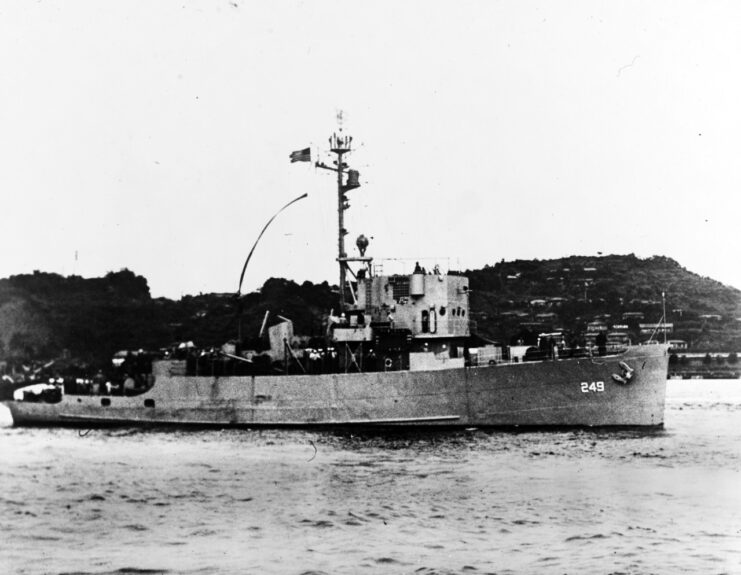
After half a year, Incredible journeyed to the Black Sea, where she continued her minesweeping duties while stationed out of the Soviet naval base in Sevastopol, Crimea. Her crew also performed air-sea rescue patrols, before going to Palermo, Italy, then her home base in Norfolk, Virginia.
By July 1945, Incredible was deployed yet again, this time to the Pacific Theater. The ship and her crew participated in the post-war Operation Skagway, clearing mines around the Ryukyu Islands and in the East China Sea. Once this was complete, Lee Van Cleef returned to the United States, where he was discharged on February 20, 1946, with the rank of sonarman first class.
For his service during the Second World War, Van Cleef was awarded the Bronze Star, the World War II Victory Medal, the Good Conduct Medal, the American Campaign Medal, the European-African-Middle Eastern Campaign Medal and the Asiatic-Pacific Campaign Medal.
Lee Van Cleef decided to give acting a try
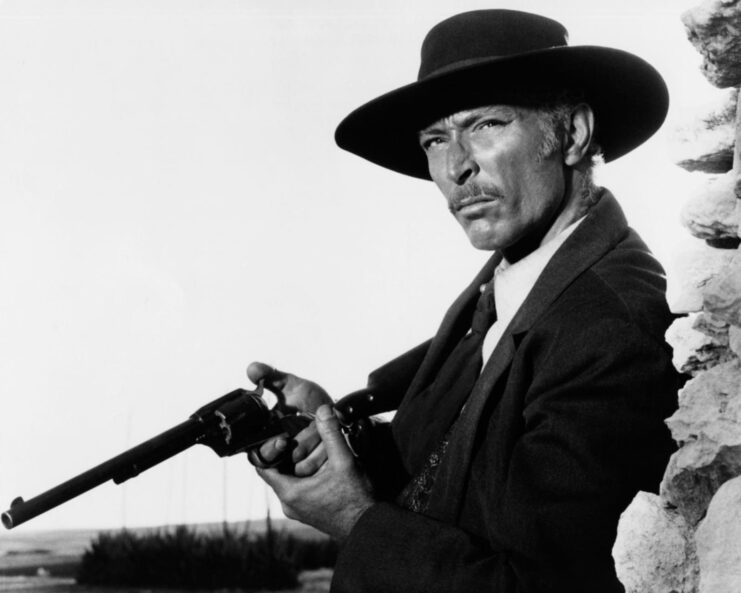
Following his military service, Lee Van Cleef returned to New Jersey, where he participated in community theater. He worked his way up and eventually found himself in Manhattan, at the behest of a talent scout. His big break came in the 1952 Western, High Noon, starring Gary Cooper. Van Cleef had actually been offered a more prominent role if he’d gotten a nose job, but he declined and, instead, played the villainous Jack Colby.
His role in High Noon greatly influenced Van Cleef’s career trajectory. Over the following decade, he appeared in many Westerns, usually playing the villain, and noir films. He also made a number of television appearances, acting on such shows as Annie Oakley (1954-57), The Rifleman (1958-63) and Gunsmoke (1955-75). Similar to his film career, the majority of these small screen productions were in the American Western genre.
Becoming a sought-after actor
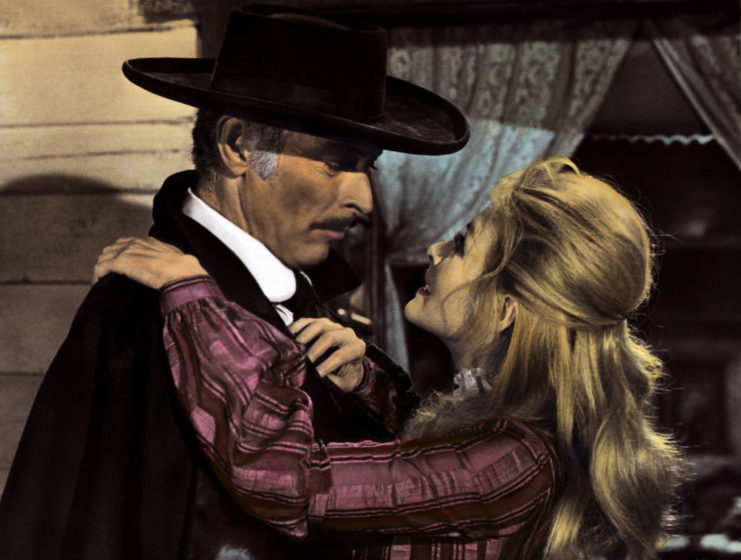
In 1965, Sergio Leone cast Lee Van Cleef as the villain in For a Few Dollars More. His work opposite Clint Eastwood was so good that he was subsequently cast as the villain in The Good, the Bad and the Ugly (1966).
It was the latter role that made Van Cleef a star and much sought-after actor. He continued to appear in movies directed by Leone throughout the remainder of the 1960s, and also starred in such features as Death Rides a Horse (1967), Day of Anger (1967) and Sabata (1969).
While Van Cleef arguably made his biggest films in the 1960s, he kept on acting throughout the 1970s and ’80s. Some of his most notable movie appearances during this time included as Police Commissioner Bob Hauk in Escape from New York (1981) and as US Marshal Chris Adams in The Magnificent Seven Ride! (1972). He even appeared alongside famed action star Chuck Norris in 1980’s The Octagon.
Lee Van Cleef worked up until his death
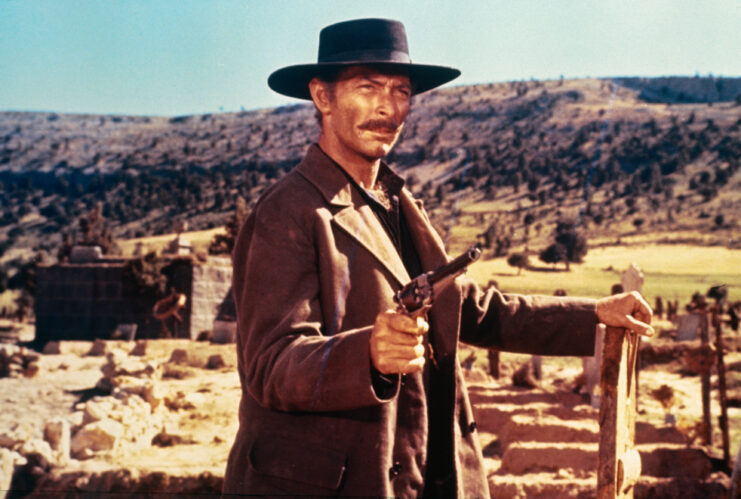
Lee Van Cleef continued working up until his death, appearing in 90 films and receiving 109 television credits. On December 16, 1989, the famed actor suffered a heart attack at his California home and passed away. He’d been diagnosed with heart disease in the late 1970s and had since had a pacemaker installed. In the autopsy report, throat cancer was listed as a secondary cause.
More from us: Tom Hanks Fired An Actor from ‘Band of Brothers’ Because He Had ‘Dead Eyes’
Are you a fan of all things ships and submarines? If so, subscribe to our Daily Warships newsletter!
In recognition of his impact on the Western genre, many of those who attended Van Cleef’s funeral wore period-authentic clothing and cowboy hats. He was buried at Forest Lawn Memorial Park Cemetery in Hollywood Hills, California.
